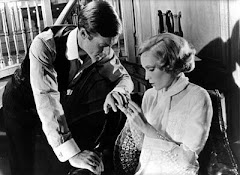Jay Gatsby: The main character and the reason behind the title of the book. He is a youngman,around thirty years old, who rose from an impoverished childhood in North Dakota to become wealthy. However, he achieved wealth by participating in organized crime, by becoming a bootlegger. Though Gatsby has always wanted to be rich, his main motivation in acquiring his fortune was his love for Daisy Buchanan, who he met as a young military officer in Louisville before leaving to fight in World War I in 1917. Gatsby immediately fell in love with Daisy’s aura of luxury, grace, and charm, and lied to her about his own background in order to convince her that he was good enough for her. Daisy promised to wait for him when he left for the war, but married Tom Buchanan in 1919, while Gatsby was studying at Oxford after the war in an attempt to gain an education. From that moment on, Gatsby dedicated himself to winning Daisy back, and his acquisition of millions of dollars, his purchase of a gaudy mansion on West Egg, and his lavish weekly parties are all merely means to that end.
Nick Carraway: If Gatsby represents one part of Fitzgerald’s personality, the flashy celebritywho pursued and glorified wealth in order to impress the woman he loved, then Nick represents another part: the quiet, reflective Midwesterner adrift in the lurid East. A young man (he turns thirty during the course of the novel) from Minnesota, Nick travels to New York in 1922 to learn the bond business. He lives in the
West Egg district of Long Island, next door to Gatsby. Nick is also Daisy’s cousin, which enables him to observe and assist the complicated love affair between Daisy and Gatsby. As a result of his relationship to these two characters, Nick is the perfect choice to narrate the novel, which functions as a personal memoir of his experiences with Gatsby in the summer of 1922. (http://www.sparknotes.com/lit/gatsby/canalysis.html)
(http://www.shmoop.com/great-gatsby/tom-buchanan.html)
-It's Gatsby Baby









































